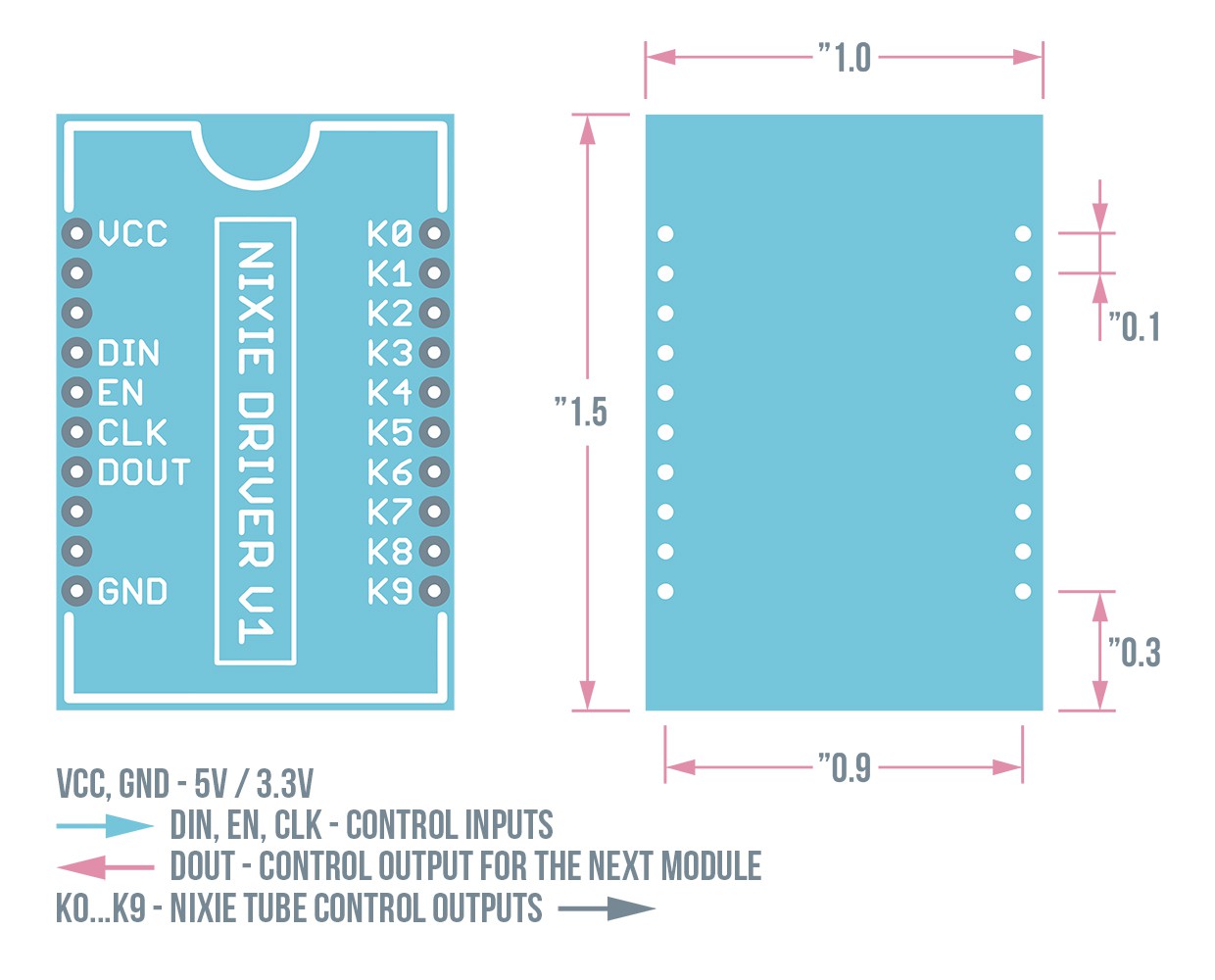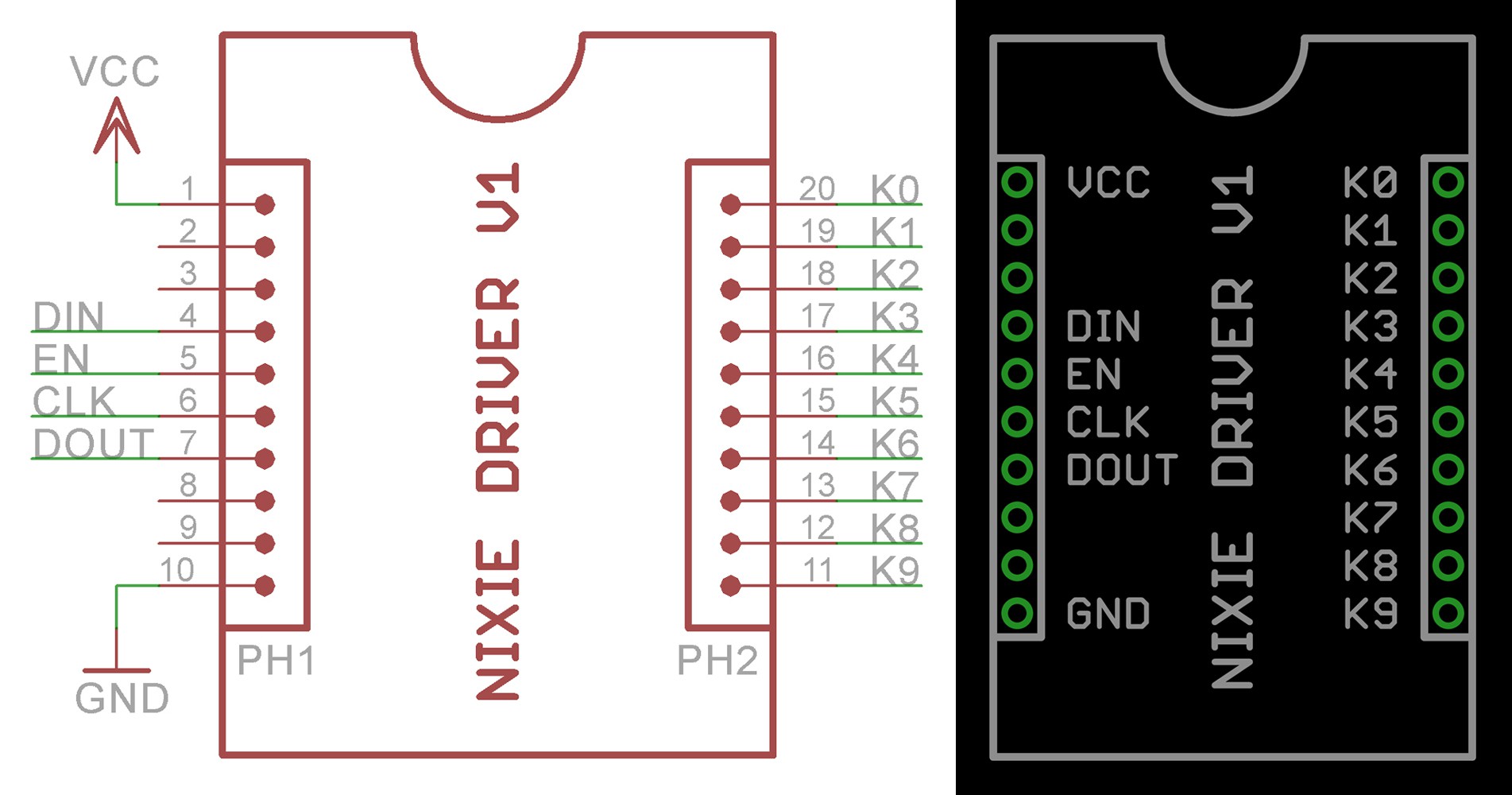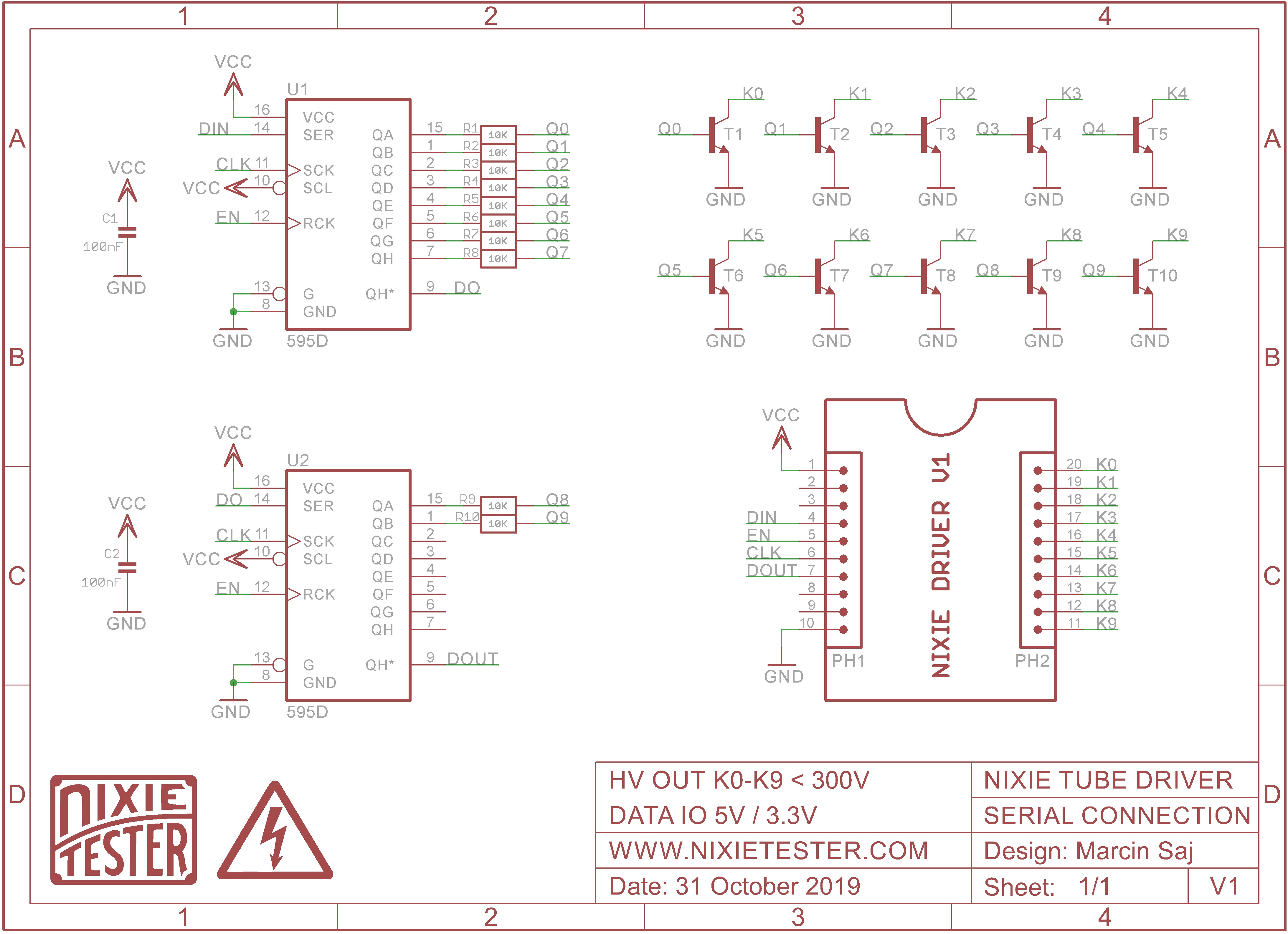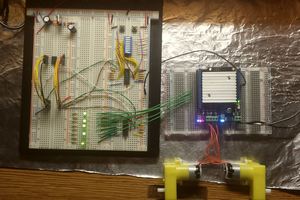Nixie Tube Driver
- 10 outputs for connecting the nixie tube cathodes (K0-K9)
- 300V off-state maximum output voltage
- Compatible with all 5V / 3.3V designs
- Easy to use with Arduino or Raspberry Pi etc. (only 3 control lines)
- Available Arduino sample program code
- Ready to use libraries: Eagle, Altium, KiCad, EasEDA
Project website: www.nixietester.com


DEDICATED LIBRARIES
- Eagle Library
- Altium Library
- KiCad Library
- EasyEDA Library

SCHEMATIC

CODE EXAMPLES
// Nixie Tube Driver by Marcin Saj https://nixietester.com
// https://github.com/marcinsaj/Nixie-Tube-Driver
//
// Driving Nixie Tubes Example #2
//
// This example demonstrates how to control up to 6 nixie tubes.
// The control is carried out using up to six Nixie Tube Drivers in serial connection.
#define DIN_PIN 7 // Nixie driver (shift register) serial data input pin
#define CLK_PIN 6 // Nixie driver clock input pin
#define EN_PIN 5 // Nixie driver enable input pin
// Function prototype with optional parameters
void NixieDisplay(byte digit1 = 10, byte digit2 = 10, byte digit3 = 10, byte digit4 = 10, byte digit5 = 10, byte digit6 = 10);
void setup()
{
pinMode(DIN_PIN, OUTPUT);
digitalWrite(DIN_PIN, LOW);
pinMode(CLK_PIN, OUTPUT);
digitalWrite(CLK_PIN, LOW);
pinMode(EN_PIN, OUTPUT);
digitalWrite(EN_PIN, LOW);
}
void loop ()
{
NixieDisplay(1);
//NixieDisplay(1, 2);
//NixieDisplay(1, 2, 3);
//NixieDisplay(1, 2, 3, 4);
//NixieDisplay(1, 2, 3, 4, 5);
//NixieDisplay(1, 2, 3, 4, 5, 6); // NixieDisplay(digit1, digit2, digit3, digit4, digit5, digit6);
delay(1000);
}
// Function with optional parameters
void NixieDisplay(byte digit1, byte digit2 , byte digit3, byte digit4, byte digit5, byte digit6)
{
StartShiftOutData();
if (digit6 != 10) ShiftOutData(digit6);
if (digit5 != 10) ShiftOutData(digit5);
if (digit4 != 10) ShiftOutData(digit4);
if (digit3 != 10) ShiftOutData(digit3);
if (digit2 != 10) ShiftOutData(digit2);
if (digit1 != 10) ShiftOutData(digit1);
EndShiftOutData();
}
void StartShiftOutData()
{
// Ground EN pin and hold low for as long as you are transmitting
digitalWrite(EN_PIN, 0);
// Clear everything out just in case to
// prepare shift register for bit shifting
digitalWrite(DIN_PIN, 0);
digitalWrite(CLK_PIN, 0);
}
void ShiftOutData(byte digit)
{
// Send data to the nixie drivers
for (int i = 15; i >= 0; i--)
{
// Set high only the bit that corresponds to the current nixie digit
if(i == digit) digitalWrite(DIN_PIN, 1);
else digitalWrite(DIN_PIN, 0);
// Register shifts bits on upstroke of CLK pin
digitalWrite(CLK_PIN, 1);
// Set low the data pin after shift to prevent bleed through
digitalWrite(CLK_PIN, 0);
}
}
void EndShiftOutData()
{
// Return the EN pin high to signal chip that it
// no longer needs to listen for data
digitalWrite(EN_PIN, 1);
// Stop shifting
digitalWrite(CLK_PIN, 0);
}Project website: www.nixietester.com
 Marcin Saj
Marcin Saj



 Electroniclovers123
Electroniclovers123
 Tauno Erik
Tauno Erik
a bit of inspiration for my old nixies!